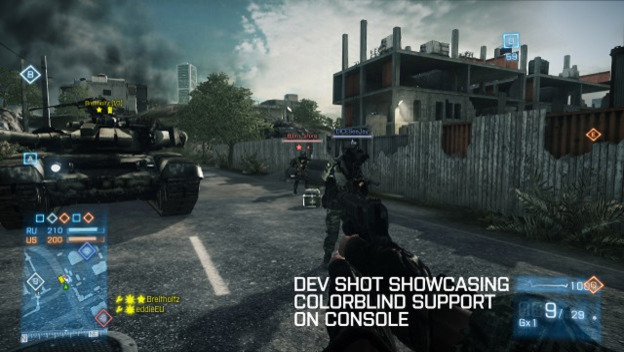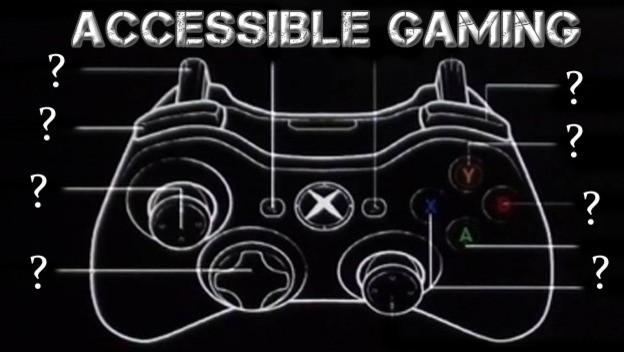It’s a topic we don’t usually discuss in gaming circles, but many gamers face physical challenges both large and small. I’m willing to bet that everybody reading this article knows at least one person who sometimes struggles, or is frustrated, when a game’s design stops them from being able to fully enjoy it because they differ physically from the “norm” in some way.
The good news is that there are well-documented ways for game developers to make their games more accessible. Many of these design features are good for gamers as a whole, but they make a huge difference to people who live with various physical challenges. Here are three things that developers can do to keep gaming available and fun for all kinds of people.
Color Blind Mode
About eight percent of men (and one in two hundred women) have some kind of color blindness, making it difficult to distinguish between certain colors—most commonly between red and green or yellow and blue. This can be a royal pain in the color-coded world of games. Imagine being unable to tell whether a ping on your shooter’s mini-map is friend or foe, or whether you’re about to be hit with a buff or a crippling enemy attack in an MMORPG. These are common situations for people with color blindness, especially since many games ask gamers to distinguish between red and green while making split second decisions.
Some game developers have become aware of these issues, since color blind gamers make up a decent percentage of the whole. For example, Battlefield 4 has a color blind option that allows gamers to choose between several color presets to distinguish between squads, teams, and enemies. Popcap is well-known for being color blind friendly as well– using shapes and well as colors to distinguish between different gems in Bejeweled, for instance.
Making games friendly to color blind players is fairly simple, as there is a wealth of software available to help developers determine how easy their interface is to see with various types of color blindness. The big hurdle here is awareness.
Subtitles. Always.
This is my personal bugaboo—I have difficulty understanding speech in noisy environments, especially if I’m unable to properly lip-read the speaker (and no game character can be properly lip-read yet). I always turn subtitles on in games, but some games simply don’t include subtitles or, even more frustratingly, only include subtitles for certain parts of the game. Nothing’s more annoying than having a game switch to a cutscene and becoming suddenly subtitle-free, or knowing that nearby characters are having an important conversation and being unable to understand it.
Having consistent subtitles is good not only for people who are deaf or otherwise hearing impaired, but for anybody who games in a less-than-ideal environment. Some developers seem averse to full subtitling because they think it removes immersion, but that’s why it’s an option. Those of us who use the option would most certainly prefer it to be present and consistent for all useful speech found in the game.

Control Remapping
The ability to remap controls to different buttons is vital for many people with physical challenges and mobility issues. These issues range from being quadriplegic to having arthritis (yes, even young people can have arthritis) or fibromyalgia. Sadly, far too many console games don’t allow people to freely map game functions to buttons. Some offer no more than a couple of possible control schemes, and many offer no choice in control schemes at all.
A complete lack of control options can make it difficult for even left-handed people to play certain games, so imagine how difficult it can make life for gamers who use their faces or feet instead of their hands; gamers for whom it is painful to squeeze the trigger buttons regularly; or gamers who need to place their controller on a surface instead of holding it in two hands.
Chuck Bittner of AskACapper.com has been spearheading the movement to petition game developers for control remapping for several years. A number of developers have implemented remapping options, or released them post-launch, thanks to Mr. Bittner’s advocacy, and I recommend his site to anybody who is interested in learning more about the importance of control remapping.
The great news is that control remapping is good for all gamers. Who hasn’t occasionally wanted the ability to change a game’s control scheme to something more convenient or comfortable? Having control remapping options is a win-win prospect for gamers, and should be something planned into games from the ground up. It’s good for all of us and makes a huge difference to gamers with special needs.
There we have it: three things that every game should have in the name of inclusiveness and just plain good design. If the entire gaming community pushed for these options to be added to games, we’d be making our hobby more friendly and accessible to people of all ages, situations, and physical capabilities. At the same time, we’d be helping improve game design in a way that benefits all of us. So the next time you’re participating in a development Q&A session on social media, think about asking developers about these topics. It will help spread awareness and make a difference in the way our games are made.
Sources:
Colour Blind Awareness , Reddit/imgur (Battlefield 4 Color-Blind Mode) , AskACapper
